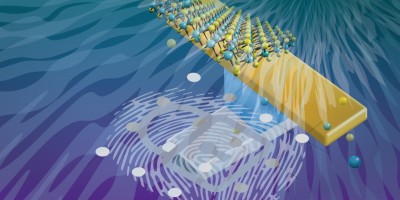During fibrotic diseases, functional tissue parenchyma progressively transforms into stiff, disorganized and non-functional tissue causing organ failure. The underlying multitude of interconnected changes in the cellular microenvironment can be investigated using bioengineered fibrosis models.

References
Habermann, A. C. et al. Single-cell RNA sequencing reveals profibrotic roles of distinct epithelial and mesenchymal lineages in pulmonary fibrosis. Sci. Adv. 6, eaba1972 (2020).
Fiore, V. F. et al. αvβ3 Integrin drives fibroblast contraction and strain stiffening of soft provisional matrix during progressive fibrosis. JCI insight https://doi.org/10.1172/jci.insight.97597 (2018).
Rosales, A. M. & Anseth, K. S. The design of reversible hydrogels to capture extracellular matrix dynamics. Nat. Rev. Mater. 1, 15012 (2016).
Pakshir, P. et al. Dynamic fibroblast contractions attract remote macrophages in fibrillar collagen matrix. Nat. Commun. 10, 1850 (2019).
Loebel, C., Mauck, R. L. & Burdick, J. A. Local nascent protein deposition and remodelling guide mesenchymal stromal cell mechanosensing and fate in three-dimensional hydrogels. Nat. Mater. 18, 883–891 (2019).
Ham, T. R., Collins, K. L. & Hoffman, B. D. Molecular tension sensors: moving beyond force. Curr. Opin. Biomed. Eng. 12, 83–94 (2019).
Matera, D. L. et al. Microengineered 3D pulmonary interstitial mimetics highlight a critical role for matrix degradation in myofibroblast differentiation. Sci. Adv. 6, eabb5069 (2020).
Trappmann, B. et al. Matrix degradability controls multicellularity of 3D cell migration. Nat. Commun. 8, 1–8 (2017).
Cao, Z. et al. Targeting the vascular and perivascular niches as a regenerative therapy for lung and liver fibrosis. Sci. Transl. Med. 9, eaai8710 (2017).
Lovisa, S. et al. Endothelial-to-mesenchymal transition compromises vascular integrity to induce Myc-mediated metabolic reprogramming in kidney fibrosis. Sci. Signal. 13, eabb8834 (2020).
Acknowledgements
W.Y.W. and D.L.M. acknowledge financial support from the National Science Foundation Graduate Research Fellowship Program (DGE1256260). B.M.B. acknowledges financial support from an NIH Pathway to Independence Award (HL124322) and the University of Michigan MCubed Program.
Author information
Authors and Affiliations
Contributions
All authors contributed to the preparation of the manuscript.
Corresponding author
Ethics declarations
Competing interests
The authors declare no competing interests.
Rights and permissions
About this article
Cite this article
Matera, D.L., Wang, W.Y. & Baker, B.M. New directions and dimensions for bioengineered models of fibrosis. Nat Rev Mater 6, 192–195 (2021). https://doi.org/10.1038/s41578-021-00288-x
Accepted:
Published:
Issue Date:
DOI: https://doi.org/10.1038/s41578-021-00288-x
- Springer Nature Limited
This article is cited by
-
Imaging cellular forces with photonic crystals
Nature Communications (2023)
-
The Role of Rho GTPases During Fibroblast Spreading, Migration, and Myofibroblast Differentiation in 3D Synthetic Fibrous Matrices
Cellular and Molecular Bioengineering (2021)


